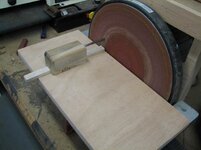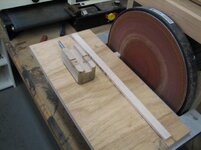philthephlier
Member
For those with a disc sander in their tool inventory the jig Jay Pickens designed for squaring pen blanks works absolutely fantastic. He really thought it through or worked it out. I have had every pen turn out with a perfect fit. It is really nice not ever seeing a gap any more, not even hairline gaps. It took less than an hour to follow his tutuorial and the very first pen made with it was completely gapless. Thanks to Jay for this great tool.


